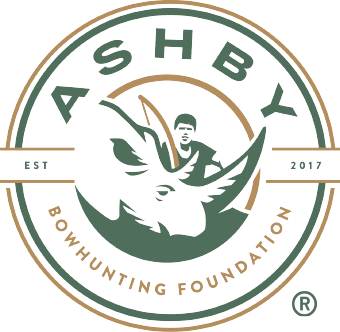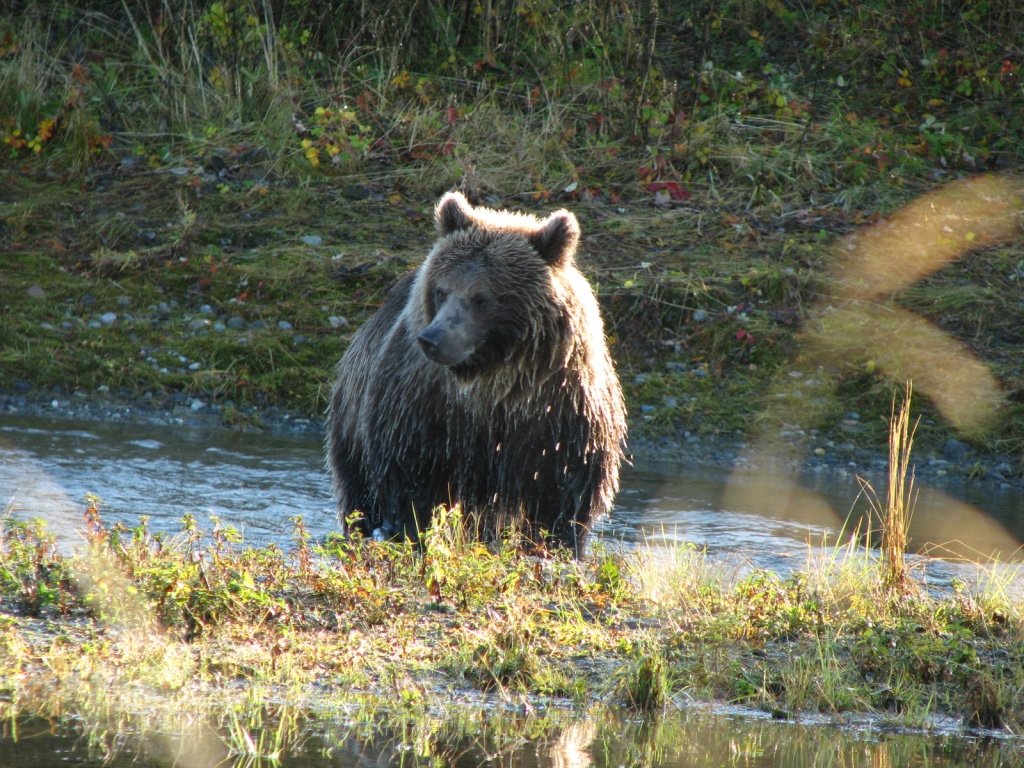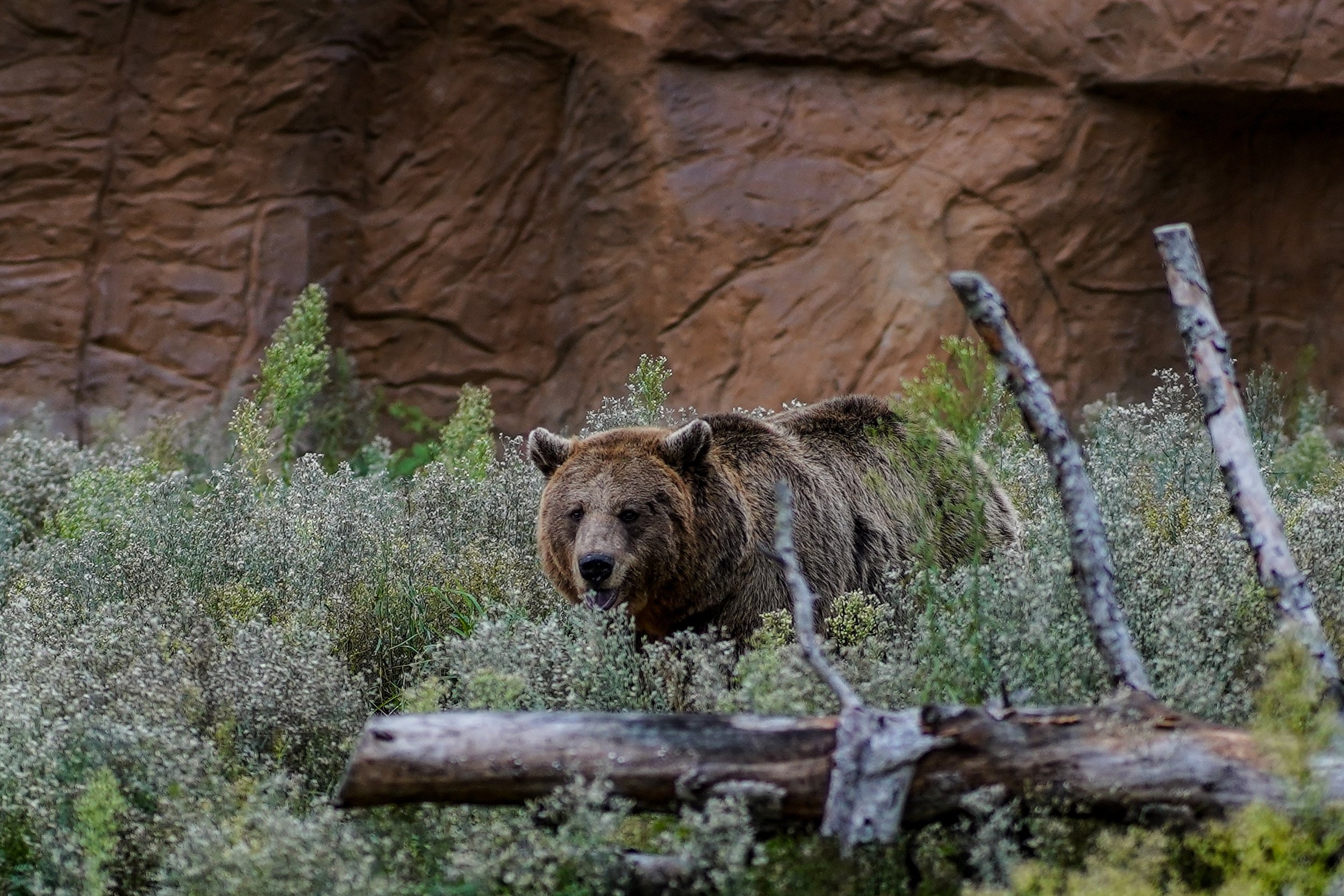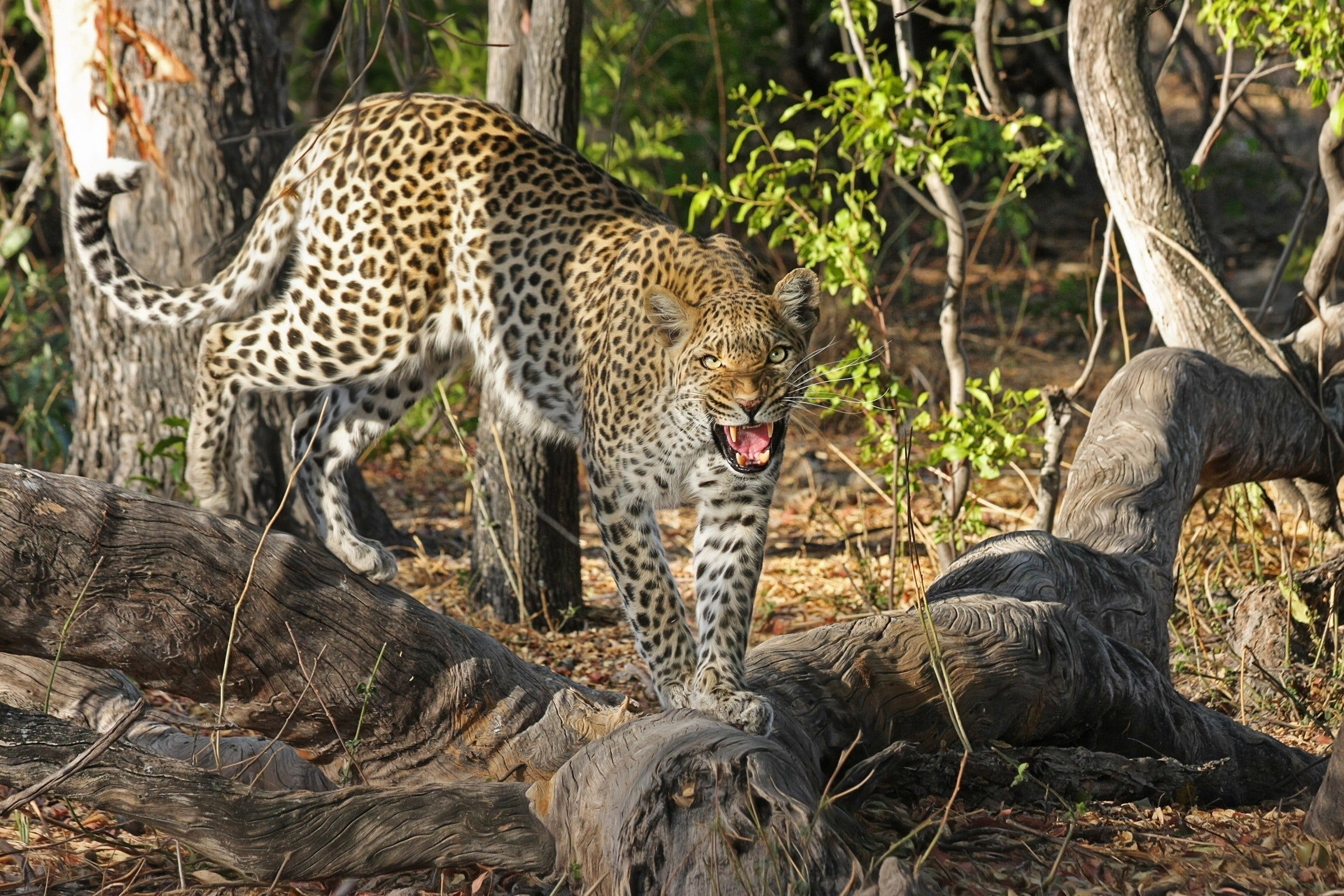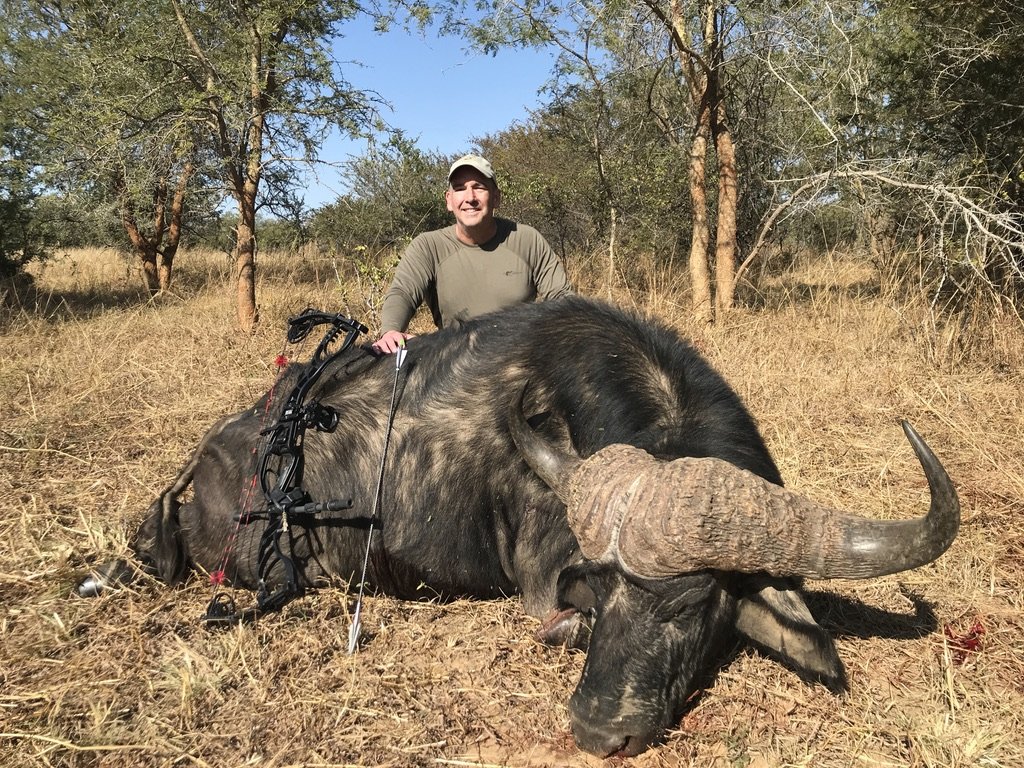Female mountain lion drinking from a remote mountain spring and elk wallow where three yearling male elk were filmed and used by National Geographic for their Untamed Americas series.
Ashby Bowhunting Foundation Newsletter
June 2025
President’s Message
Rob Neilson with a pronghorn he killed with an arrow that included high structural integrity, a heavier overall arrow weight, a higher FOC, and a high quality single bevel broadhead. It’s a myth that you need faster and lighter arrows in the open country of the west.
Recommend or Require?
Every year, we talk to hundreds of bowhunters (some new, some seasoned) about recommendations to help them be successful. Every year, the same question finds its way into the conversation that group x or group y states ABF requires particular set ups that you don’t need. Ironically, many of these groups are also all over YouTube and social media to push their testing in foam, gel and other artificial mediums and incorrectly insinuate that equates to penetration into an animal. They are absolutely incorrect as all that does is show you a test in that particular medium. I’m glad those groups do that testing as it reinforces how completely insignificant that type of testing is when it comes to hunting.
Let me start by saying this. At ABF, we don’t mandate anything. We don’t set regulations nor do we police bowhunters. What we do is hunt, test, measure, and share the outcome of the results of decades of research on what actually works in the field. A quote from a very famous bowhunter sums up our thought process: “A deer can be killed with most any combination if no heavy bones are hit but what is needed is something that will crash through where the going is tough.” Fred Bear, Ye Sylvan Archer, 1943. Our goal has always been to provide hunters with the information to make better decisions for themselves, which likely will become their personal requirement.
That said, let’s not sugarcoat this simple fact: the arrow system you choose is the single most important factor in terminal performance. Not your draw weight, not your brand of broadhead, not how fast your bow is shooting or what brand of camo you prefer. We’ve tested hundreds of combinations under controlled and real-world hunting conditions, and the consistent top performers always include the same features: high structural integrity, a heavier overall arrow weight, higher FOC, and a high quality single bevel broadhead. These aren’t just “nice to haves.” They’re difference makers, especially when a marginal hit happens in the field.
So, do we recommend it? Absolutely. Do we personally require it for ourselves when we step into the field? Absolutely because we understand what can happen when that unexpected animal movement happens, you pull a shot slightly, etc. If you’ve ever had a hit that didn’t go as planned and watched your arrow crumble or look like an antenna sticking into an animal as it runs away, you know why. Ethical hunting requires us to take every step we can to ensure quick, clean kills. That means building an arrow system designed not only for when things go right (Plan A), but for when they go awry (Plan B).
We don’t need laws or mandates to raise the bar in bowhunting. What we need is a community of hunters who choose to educate themselves on terminal performance, who put the animal first. We don’t require it. But once you understand the why, you just might. It is always up to the specific bowhunter to determine the hunting recipe that will work every time for them. The animals we hunt deserve the very best we can put forward and no less.
Good hunting and as always, have a nice day.
Rob Neilson
Donations
The Ashby Bowhunting Foundation is a 501 (c) (3) education and research organization. 100% of your donation will go to the Missions of Ashby Bowhunting Foundation. No salaries are paid by the Foundation. We realize there are many worthwhile organizations out there, and greatly appreciate your consideration and support.
Newsletter Tip
Paper tuning results with notes.
Perfect arrow flight paper tuning tip – by Dennis Wehling
One of the most important factors to increasing arrow penetration is the journey to achieving perfect arrow flight. While this sounds simple, it takes time and patience to achieve repeatable perfect arrow flight and shooting form. Paper tuning with bare shafts is a great way to see what you and your arrows are doing in flight as they leave your bow. Testing each shaft for perfect flight before fletching is an important step in increasing penetration. If your arrows are flying straight at launch with bare shafts and field tips, it seems that perfect broadhead flight with fletched shafts is easy to achieve. A willingness to try paper tuning and patience are important keys to perfect arrow flight.
Note by David Neils: I had the honor of interviewing Dennis Wehling at his home in Larkspur, Colorado on May 16, 2025. He shares a wealth of bowhunting knowledge and experience over many decades. Dennis was also interviewed for the April 2025 newsletter.
Events
June 28, 2025: Online workshop on Maximizing Arrow and Broadhead Terminal Performance. These workshops will be limited to 15 people and leverages the same material we cover for Texas Parks & Wildlife Department Hunter Ed Instructors.
AMOS - Association of Mozambique Safari Operators
AMOS contacted ABF as they are attempting to legalize bowhunting dangerous game in Mozambique. We have provided them the same information we have provided PHASA several years ago. Additionally, we agreed to discuss the information in detail not only with AMOS, but also in conjunction with their head of Parks at ANAC that will be reviewing the information.
WhatsApp Community
If you utilize WhatsApp, ABF has a site inside the Longoria-Hosmer Hunting and Conservation Community. As our readers know, 100% of donations into ABF go to furthering the missions of ABF. The same holds true with the Longoria-Hosmer Foundation where hunters directly support the wilderness and wildlife conservation efforts of the @longoriahosmerfoundation, a 501c3 nonprofit that empowers wildlife and wilderness conservation around the globe. The links are here:
Longoria-Hosmer Hunting and Conservation Community: Open this link to join my WhatsApp Community: https://chat.whatsapp.com/I22hsy6aEZ8BHPbklkvwQg
Ashby Bowhunting Foundation: Open this link to join my WhatsApp Group: https://chat.whatsapp.com/JAs760BctAK8E644dXG1m9
We hope the subscribers of our newsletter will join this one-of-a-kind community. Of course, common sense rules apply…stupid posts will get you kicked out without notice.
Ashby System Results - Bowhunter Interview with Thom Jorgensen
1. How long have you been a bowhunter?
A hog taken near the Savannah River that made excellent table fare.
In 2009 I was diagnosed with thyroid cancer and I started rethinking my food system and how sedentary my daily life had become. I knew I had to get back out into the woods and start eating wild game again, but I really didn’t feel like shooting more animals with big boom sticks at long distances. I began researching seasons and tags in a few states and I soon realized that bowhunting could keep me in the woods twelve months of the year with opportunity to pursue many species of animals. I bought my first tags in 2010 and have been hooked ever since.
2. Do you hunt with traditional equipment, compound, crossbow, or a combination of these?
Having no practical archery knowledge at that time, I went to a pro shop to get a quick education and I was taken aback by all the different bows, sights, releases, rests, arrows, and broadheads. I left empty handed and frustrated. Luckily I saw a copy of Traditional Bowhunter magazine at the bookstore, then created an account on Trad Gang to start posting my newbie questions. Once I had a local bowhunting mentor and a good bow I knew I was on the right path. I dabbled with different types of bows the first couple years, but the ultimate hunting tool for me personally is a reflex/deflex laminated longbow.
3. What is/are your favorite animal(s) to hunt?
If I could only hunt one thing for the rest of my life, it would be hogs. I have hunted them on four continents so far, and I’m currently planning the other two. I hope to finish my pig tour with a return to Africa for a bushpig. Through an odd series of events I became a volunteer six weeks a year on a hunting property on the Savannah River that only allowed traditional bowhunters to hunt wild hogs. I would have thought I would get bored of observing a single species for hundreds of days, but they are so adaptable I felt like it was a never ending game of chess to get folks with trad gear well under 20 yards with wild animals with no fences. I know I would still be at it just as hard today if it weren’t for the untimely passing of my friend there. Still, I was just hunting a Georgia WMA with a young bowhunter looking across the river at that very property a few weeks ago.
Thom and some volunteers demonstrating the hide penetration test with an expandable broadhead.
4. What is/are your favorite bowhunting method(s): stands, still hunting, spot and stalk, pure stalking, or other?
I adapt my approach to the place and animals I am pursuing. I love moving from tree to tree with my stand all fall long for hunting deer. Over months it goes from too hot and green, to too cold and white. I love watching that change over the course of deer season in the upper Midwest. New Year marks the day I ditch the stand and start roving the hills for small game ahead of stalking the swamps for hogs. I will still use blinds or hides when mentoring a brand new hunter, or targeting a certain species over water. It’s a tool for the toolbox, and sometimes on a rainy day it’s better to sit in one and drink coffee with a book than do anything else.
5. What event(s) brought you to use Ashby-style arrow setups?
A dozen arrows for hunting buffalo.
I am forever grateful that when I showed up to my very first hog hunt with 2117 aluminum arrows and Zwicky 175gr Delta broadheads I received a good sit down from an experienced guide. I don’t know if the gentleman would want to be named, but he inspected my arrow then asked me to pull one out of his quiver. It was high FOC, and it was the sharpest skinny blade I had ever seen. Over the next few days and nights we talked about the Ashby Reports and arrow performance on big boar hogs and bull elk with trad bows. I had a lot of homework to do when I got home. I shot my first hog on my next trip and killed it with a Tuffhead on the end of my arrow.
6. Could you describe your typical arrow setup(s) for hunting big game?
My normal arrow for my 64 pound longbow is a little ridiculous, 815 grains at 30.3% FOC. I start with a standard diameter .300 spine Black Eagle Outlaw carbon shaft with factory nock and four small feathers on the back either 2” or 3” long with a little helical. Up front I have a 225 grain Tuffhead epoxied onto a custom stainless steel adapter, with two inches of external footing. I have carried this arrow for everything from squirrels to moose over the last ten years
or so and it has performed amazingly well. I built an upgraded version of that arrow for my 87 pound longbow to hunt buffalo. I started that one with a .250 spine Black Eagle Carnivore shaft with four fletch, but I used an illuminated nock as required by my PH. From there I epoxied 16” of .400 spine micro diameter shaft to increase both the spine and FOC. I use the same combo stainless insert/glue on adapter and aluminum footing, but I go up to the Tuffhead 300 grain to top it off. They finished out plus or minus a few grains at 1070 grains at 30.7% FOC.
7. Overall, what has been your experience using Ashby-style arrow setups?
Most of my experiences have been very good, with a few that were truly unbelievable. I dropped one deer in its tracks by shooting through the near side scapular ridge, through the spine, and out through the opposite shoulder. That wasn’t the shot I was aiming at, but the whole point of that arrow is for when things go wrong.
I have only recovered four animals more than 100 yards from the shot location, the vast majority being under 50 yards. I have only failed to recover a couple animals, and I accept I was the shortcoming in tracking each of those in difficult conditions.
I did have one arrow failure where I failed to breach the near side rib, and on a cape buffalo of all things. I meticulously went over the remaining 11 arrows, and one year later nearly got a pass through on a Asiatic water buffalo after blowing apart a huge rib on the way in. A very good friend’s longbow was the perfect tune for my arrows and he killed his cape buffalo with another out of that same dozen.
Two hogs stalked in Australia's Top End, the quiet longbow was able to quickly double up.
8. Do you have any bowhunting tips you would like to pass along?
Instead of a practical tidbit I would like to offer something philosophical. Years ago I was sharing a camp with some gentlemen who had been bowhunting around the world since the 1960s, one of them said to me “Make a list of everything you want to hunt with a bow, then start with the biggest nastiest one. Pulling a heavy bow won’t get easier, and those kinds of hunts won’t get cheaper.”
(Contact us if you’d like to be interviewed for a newsletter. We are looking for bowhunters who are using a heavier arrow/broadhead combination recommended by the Ashby Bowhunting Foundation.)
From the Field - Backcountry Bowhunting
Watching a mature bull elk tip his head back and bugle at timberline, with steam rolling out of his nostrils, activates a strand of my DNA that simply can’t happen any other way. Bowhunting elk in northern Colorado has been a favorite activity for two plus decades. And every year, the pattern of bowhunter activity in my stomping grounds, either hunting for the day or longer, seems to wax and wane based on the weather. Anyone who has spent time in alpine country knows you can be enjoying a cool breeze with blue sky overhead and a few minutes later be completely chilled to the bone, drenched by a thunderstorm or an unexpected snowstorm. Inclement weather, more than anything else, determines how many bowhunters are in the field at any one time, at least in this area, at 9,000 - 12,000 feet above sea level.
Tipi tent, packed in 32 miles in the heart of the Bob Marshall Wilderness of Montana.
But schedules don’t always sync with perfect bowhunting weather and sometimes I’m dealing with snow, rain and/or erratic wind. I needed something that would work in any weather, allow me to camp and hunt far from the crowds and maximize my time afield.
Tipi tent with titanium stove
If I’m going to hunt for more than a week in the backcountry, I prefer to end each day drying out my gear, especially my boots, eating a hot meal in a warm space, and sleeping well. I’ve cold camped for decades but anymore, at 65, I prefer to use a large tipi style tent with a titanium stove. The tent I use is fourteen feet in diameter and 9.5 feet at the peak. It is a floorless tent, which I prefer. I use the old style emergency space blankets to position under my sleeping bag and pad as well as my gear. The stove, although small, will hold a fire for 45 minutes to an hour. It compacts down, including the stove pipe, to less than half the volume of a paper grocery bag. The tent compresses down to the size of a large water bottle. Together they weigh nine pounds. It allows for incredible comfort anywhere. It’s the kind of shelter that lets you stay in the game when others are packing out early. The model I use is an eight man tent from SeekOutside.com. It’s ideal for two guys with gear.
For bowhunters committed to going deeper, staying longer, and being ready for whatever the high country dishes out, a lightweight, tipi tent is the bomb. When bulls are screaming across wind-swept ridgelines and storms are building over the divide, it’s the kind of gear that gives you confidence to hunt hard and sleep dry. The days of waking up and slipping your feet into wet boots, are over.
Two meals per day results in more time afield and better sleep
For years I’d get back to my tent after hunting all day and make dinner after dark, simply out of habit of eating three meals a day. But making dinner and doing dishes after a long day didn’t make a lot of sense. To maximize my time bowhunting I reduced the number of main meals to two per day, the first one around 9:30 or 10:00 am and the second around 3:00 pm, right before the evening hunt. I’ll start the day with a cup of coffee and a Clif bar or Pemican bar. I’m up and out right after legal shooting light. I’ve spooked too many elk walking through the woods in the dark; another reason to avoid the long slog from the highway and instead camp near where I start hunting each day. By 9:30 I’ve been hunting for three hours or so and ready for a break. I prefer an avocado (my favorite food on the trail), peanut butter in a tortilla or cooked rice and smoked salmon. Or if it’s cooler I’ll heat up some water on my stove and make some type of pasta dish. I’ve never had a hankering for freeze dried food. It’s expensive and much of it doesn’t sit well with me.
Back to hunting, moving slowly and checking elk wallow meadows for activity. The elk are there. There’s no need to cover much ground. One step at a time. By mid afternoon I’ll typically head back to camp and fix the largest meal of the day, hopefully some local protein, grouse or fish. I’ll have some dried fruit for dessert. The thermos get’s filled with tea and I’m back out for the evening hunt, typically waiting along travel routes from bedding to feeding areas. Once I’m back at camp I’ll heat up some water to wash off with, finish my tea and head to bed.
Merino Wool versus Polypropylene
For bowhunters heading deep into the backcountry, choosing the right baselayer can make or break a multi-day hunt. Merino wool stands out as a game-changer, especially when compared to traditional polypropylene (poly pro) layers. Merino’s natural odor resistance is one of its most appreciated benefits. Unlike synthetic fabrics that start to smell after a single day of sweat and exertion, merino wool fibers contain lanolin and have a unique structure that resists bacterial growth—the root cause of stink. That means you can wear the same merino baselayers for several days without offending yourself, your hunting partners or maximizing the human scent cone of detection for wildlife.
Comfort and temperature regulation are also where merino shines. Backcountry hunting often means unpredictable weather—sun, sleet, wind, and even snow can all hit within the same day. Merino wool keeps you warm even when wet and insulates better than synthetics in cold conditions. Unlike poly pro, which can feel clammy when damp, merino continues to feel dry against your skin by wicking moisture away and dispersing it across the fibers to evaporate more evenly. This makes it ideal for both the high-exertion hikes into the alpine and the long, still hours spent glassing ridges or sitting on stand.
Lastly, wearing merino baselayers enhances the overall experience and endurance of your hunt. When you’re warm, dry, and not worried about odor or discomfort, it’s easier to stay focused and positive—even in harsh conditions. That can mean the difference between heading home early or continuing to hunt until you’ve squeezed out every minute of your time afield.
Celebrating the WILD in wildlife,
David Neils
Doc’s Ramblings
Dr. Ed Ashby with a southern bushbuck
Ashby System - For All Bowhunters
Now, for years I’ve watched with quiet frustration as a portion of the bowhunting community dismisses the Ashby system as something meant only for the traditional crowd - those shooting recurves and longbows. That’s a misunderstanding rooted not in the research, but in assumption. The principles I laid out, forged over decades of study and testing in real-world hunting scenarios, were never intended to be niche or discipline-specific. They are physics-based truths about arrow flight and terminal performance - truths that don’t care what kind of bow you shoot.
Let me be perfectly clear: the Ashby Foundation's recommendations - high structural integrity, perfect arrow flight, sufficient arrow mass, high FOC, and the use of single bevel broadheads having a high Mechanical Advantage - are for all bowhunters. Whether you're slinging carbon from a 70-lb compound or drawing a 50-lb longbow, the biological and physical barriers you face are the same. Rib bones don’t get softer because you have cams and cables. The scapula doesn’t deflect less because your sight pin is dialed in. Penetration matters no matter what you shoot.
The compound bowhunter often assumes that their speed and the advantage their mechanically assisted bow negates the need for a well-engineered arrow system. That thinking has led to more than a few lost animals. High energy does you no good if your broadhead fails or your shaft splinters. Conversely, a structurally sound arrow setup, built to withstand bone impact and deliver maximum penetration, turns marginal hits into recoverable animals - and makes good hits lethal even faster.
I didn't dedicate years of field testing in Africa and beyond just to give traditional archers an edge. I did it because I wanted to uncover what actually works in real tissues, under real conditions, when things go wrong - because eventually, they do. And in those moments, it won’t be your bow that determines the outcome. It will be your arrow system. The Ashby system is not about style. It's about effectiveness, regardless of the weapon.
So, to every compound shooter who thinks this system doesn’t apply to them, I say this: If your goal is ethical, reliable, and repeatable lethality, the physics are the same for you as they are for anyone else. Whether you shoot 280 fps or 180 fps, biology doesn’t change - and neither should your arrow philosophy.
Good hunting, my friends,
Dr. Ed Ashby
